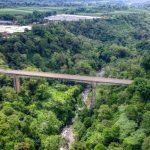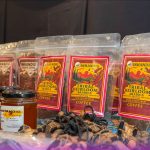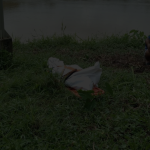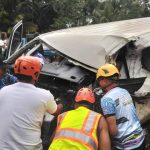CHICAGO, Illinois, US (BukidnonNews.Net/01 October 2024)—I got this opportunity to explore some artifacts in the Field Museum of Natural History in Chicago until December this year. I translate this opportunity as an accountability to examine the significance of these more than 100 years old material culture, to our present life.
Our genetic composition usually prompts us to take a look at the past generations: what they do, what they think, what they talk about or what they aspire. One way to reconstruct the past is to examine the material culture involved in the lives of people in the past. They were the creators, the designers, the users and the owners of those items. Behind every material culture, narratives of daily life and indigenous knowledge are accessible and this accessibility enhances our understanding about the present and provides us meaningful appreciation about the future.
To represent aspects of cultural life among the Bukidnons, I chose varied artifacts to examine to reflect the religious lens, value system, domestic activities, economic subsistence, customary practices, indigenous leadership and aesthetic values of the people in Bukidnon. The items I have chosen are a portion of Fay-Cooper Cole’s anthropological collection from the Philippines particularly in the Province of Bukidnon, in 1910. The preliminary identification of the object includes the random identification of the object’s name (includes the Binukid term), comparison with the existing artifacts in Bukidnon Studies Center, measuring the dimension of the object and drawing or sketching the significant details of the object.
To extract data from the objects, I use a simple tool that contained six statements that would prompt detailed answers: what is it made of, what is it for, who uses it, when to use it, why use it and how to use it. This series of questions eventually provided an extended description about the people and their locality.
To enhance particular artifact description, I find it necessary to identify its accessories or its related objects. For instance, describing a plate rack made a way for me to describe also the cultural significance of the plates – that they are also called lampay and they are either for daily use or exclusive only for ceremonial activities. The content of the plate (like coins and mamaen) rested on a bangkasu (ceremonial table) would open another avenue of cultural exploration.
Indeed, one artifact can tell stories about the past. This part of the process is quite challenging. It prompts in-depth examination of the connection between man’s activity and material environment.
Since this exploration on Bukidnon artifacts involves indigenous knowledge, the necessity of cultural protocol is non-negotiable even if I would consult the works of Fay-Cooper Cole and John Garvan. The Manobos of Mindanao by John Garvan is a good supplement in studying the people of Bukidnon. With the facilitation of the National Commission on Indigenous Peoples, the product of this project will go through a group of leaders and elders for review and validation. This part of the process ensures that no cultural misappropriation will occur.
As of this writing, I have examined 11 artifacts of different categories – body ornament, household paraphernalia, ritual articles and more will be coming. My integrity to have these objects examined sometimes suffer but I cling to the tumanud (caretaker) of Datu Bagangbangan, the pandalawit (prayer) of Gali Waway Saway and the Mulin-ulin (the spirit who guides and teaches) who encourages me to continue the task. The A.B. Lewis Laboratory of the Field Museum becomes my meeting place with these Bukidnon artifacts. Each of them still looks new despite of their age – more than a hundred years old. I feel humbled each time I realized that these are living witnesses of the past. They are not just objects of antiquity. They are not just objects of a museum. They are living witnesses whose testimonies are worth-listening.
I marked my first month of arriving in Chicago last week. I went to Jollibee Chicago along S Michigan Avenue to celebrate the faithfulness of Magbabaya. While waiting for my chicken sandwich, I missed the scent of Jollibee Malaybalay City.
(Angaray is Binukid for female friend. The author is the Director of the Bukidnon Studies Center and a faculty member of the Sociology and Social Science Department of Bukidnon State University. She is currently in the United States as a grantee of the Fulbright Visiting Scholar Program 2024. ANGARAY’S TAKE is her column in BUKIDNON VIEWS, the opinion section of BukidnonNews.Net.)









